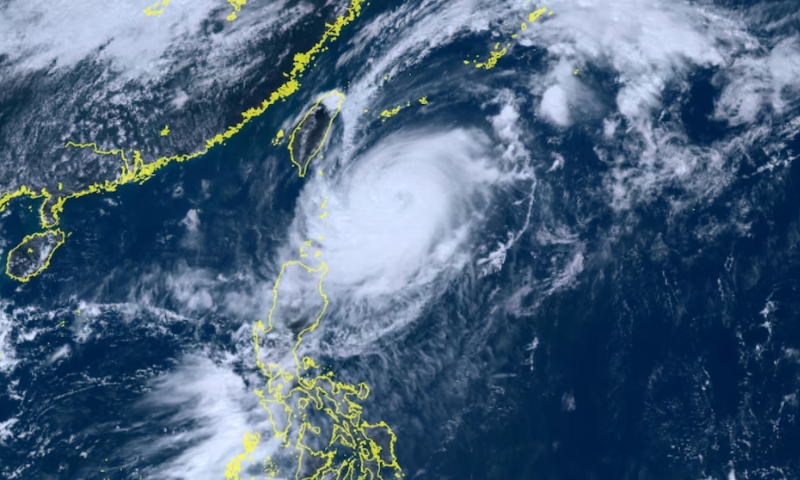TAIPEI, Taiwan: Taiwan is on high alert as Typhoon Koinu approaches on Tuesday, and authorities are preparing for its potential landfall later this week.
The typhoon is anticipated to bring strong winds and heavy rainfall to the southeastern parts of the island.
The weather bureau in Taiwan took action by issuing a sea alert late Monday, followed by a land warning on Tuesday, informing the public about the impending typhoon. Typhoon Koinu is currently moving northwest, boasting sustained winds of 162 kph (101 mph) near its center, according to the bureau’s latest update.
Forecasters are predicting that the typhoon will unleash its force on the southern and eastern regions of Taiwan early Wednesday, with the possibility of making landfall in the southeastern part of the island on Thursday.
As a precautionary measure, beaches in Kenting National Park, situated at the southern tip of Taiwan, have been closed to the public as of Tuesday. Concurrently, the local authorities in the southeastern Taitung County have identified several coastal and mountainous areas as potential hazard zones.
Chinese weather authorities have also issued warnings, indicating that Koinu might make landfall along Taiwan’s southern coast or bypass the island without hitting land, moving westward with diminished intensity from Wednesday evening to Thursday morning.
In preparation for the approaching typhoon, authorities in the southeastern Chinese city of Zhangzhou have urged fishing boats to return to port by Wednesday evening and suspended ferry services for Thursday and Friday.
Although Typhoon Koinu did not directly hit the Philippines, the nation’s weather bureau issued storm alerts in at least six northern provinces, cautioning about potential flooding and landslides, especially in mountainous regions.
After experiencing Typhoon Haikui in early September, Taiwan remains vigilant in its preparations, aiming to mitigate potential damage and ensure the safety of its residents. Typhoon Haikui marked the first typhoon to make landfall in Taiwan in years, causing uprooted trees, vehicle damage, injuries, yet fortunately avoiding any catastrophic harm.
























